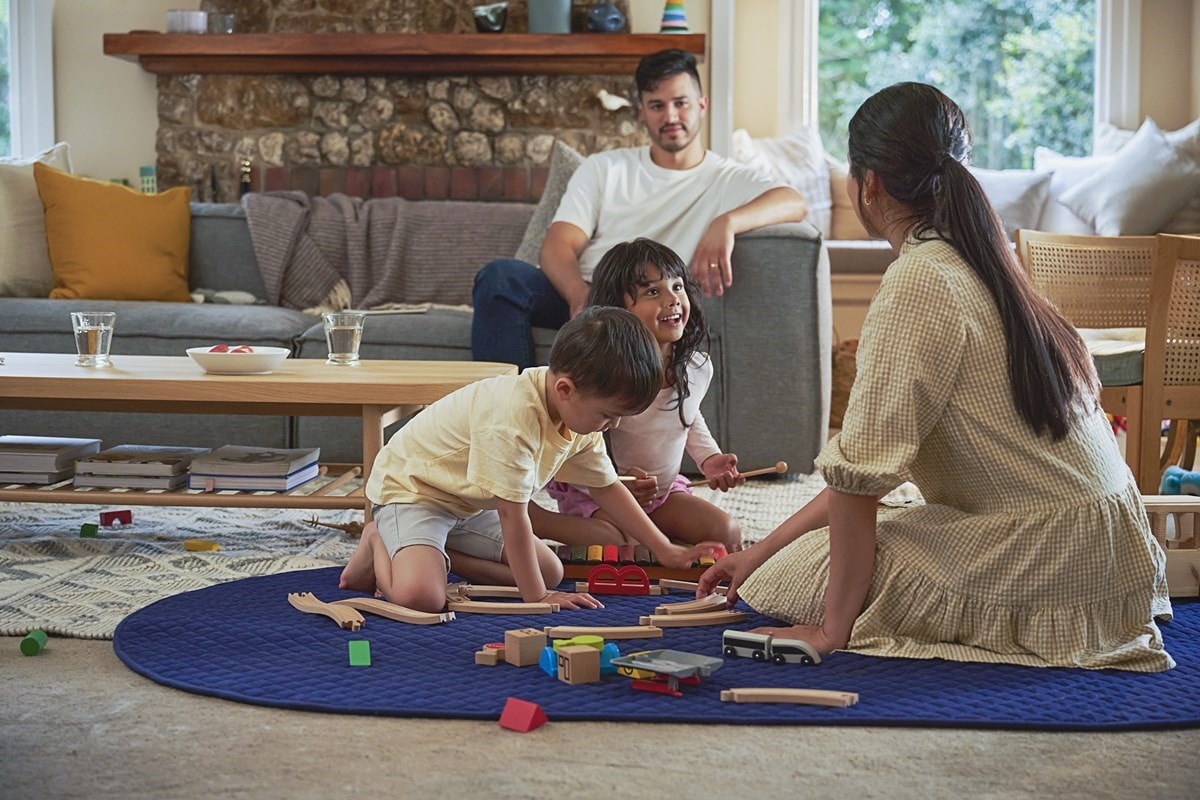Australian weather can be extreme – from scorching hot summers to bitingly cold winters, which makes both heating and cooling a necessity for year-round comfort.
What’s the most energy-efficient way to heat or cool my home?
Depending on where you live, cooling and/or heating can account for 20% to 50% of the energy used in your home. To keep your household bills down and environmental impacts low, it’s now even more important to consider cooling your home as efficiently as possible.
With technological improvements and increasing gas prices, Aan energy-efficient, reverse-cycle and split-system air conditioner can be your more energy efficient year-round option – and here’s why.

What is a reverse-cycle split-system air conditioner?
A split system is one of the most popular types of air conditioning because it’s usually going to be more convenient, efficient and can provide both heating and cooling options.
Split-systems are designed for better comfort with the inside sleek and quiet, holding just the cooling coil, long blower and an air filter. The compressor and fan are housed outside your home – which helps to keep noise from the compressor and fan out of your living space.
What makes reverse-cycle air conditioners efficient?
Conventional heaters generate their own heat energy, such as burning gas. But a reverse-cycle air conditioning system absorbs the heat from the air outside and uses that energy to help heat the air inside, making it very energy efficient. And it doesn’t need to be warm outside either – this technology works the same way even in freezing conditions. It’s the opposite of how your fridge works.
A reverse-cycle air conditioner can reach 300–600% efficiency, depending on the appliance and usage, which means that it can take one unit of thermal energy and turn it into three to six times as much heating or cooling energy. Under mild conditions, some products may achieve efficiencies of over 1000%.
To help maximise your energy savings, set your heating between 18 and 20 degrees Celsius in winter or your cooling between 25 and 27 degrees in summer. Typically, every degree above 20 degrees can increase your energy usage between 5-10%.
Reverse-cycle air conditioners are not only great at assisting you to keep your home at comfortable temperatures year-round. Chosen well, they can be a more efficient and cost-effective option to help reduce your power bills and environmental footprint.

Not all heating and cooling systems are created equal
A split system is just one of many options when choosing an air conditioner. The best solution can often depend on your priorities and the spaces you’re heating and cooling. Below you’ll find different types of heating and cooling:
Evaporative coolers
Evaporative coolers blow air over a film of water on a filter or sponge, cooling the sponge and the air through evaporation. Outside air is drawn through the evaporative unit (generally on the roof) and cooled.
This cool air is then forced into the house, which pushes the hot air out through open windows and doors. This type of cooling unit is often only suitable in low-humidity areas that don’t experience extreme heat.
Ducted air conditioning systems
A ducted system is designed to cool and heat an entire home. They have an outdoor unit and ducting that is usually installed in the ceiling or under the floor. Air ducts run from the outdoor unit, generally through channels in the ceiling, and then into each room. This can be an expensive option to both install and run, but it can be a cost-effective way to heat or cool a large house. Think about whether a ducted system or multiple split systems would suit your needs better.
Window air conditioning units
A window unit is a single box installed in a window or less typically, through an external wall. For smaller spaces of up to 50 square metres, these can be useful and affordable options, especially where a split system is unavailable (for example in rental properties).
These units aren’t as energy efficient as split systems but can be a viable alternative with lower up-front costs. However, as their energy efficiency rating is lower, they will have higher running costs.
Wall air conditioning unit
A wall unit is made up of an external compressor unit and an internal unit mounted on the wall. Usually, one wall unit is installed in each room in the house. There is a range of products in the market - choosing the ones with the highest Energy Star rating, may help keep your heating and cooling bills under control. Wall units can also be a great way to match installation costs according to your income (i.e. you don’t have to install them all at once).
Frequently asked questions
How much electricity does an air conditioner use in Australia?
This will vary and largely depends on the type, size and efficiency of air conditioning system you use. Split systems can consume 0.8-3.5 kW of energy per hour (kWh). Ducted air conditioners are more energy-intensive to cooler larger spaces, and can use up to 5 kWh. Smaller window air conditioning units typically consume 1-2.5 kWh. Evaporative coolers tend to be more energy efficient, with some models using only 0.02-0.1 kW per hour. Wall units can typically use between 0.9kWh and 2.5kWh.
How energy efficient is air conditioning?
Energy efficiency for air conditioning can vary, depending on the type, model and your climate zone. Reverse-cycle, split-system air conditioners tend to be the most energy efficient.
At what temperature is an AC most efficient?
The best temperature for air conditioner efficiency depends on the season and may be impacted by other factors such as appliance and usage. For summer, that’s usually between 25 and 27 degrees Celsius. And in winter, setting the temperature between 18 and 20 degrees can usually help boost energy efficiency.
How do I know if my AC is high efficiency?
To understand how energy efficient your air conditioning system is, check the Energy Rating label. The more stars, the more energy efficient.
What is the best efficiency rating?
In Australia and New Zealand, energy efficiency for appliances is indicated by the Energy Rating label. This label indicates an appliances’ star rating for energy efficiency and energy consumption for electricity usage. In terms of energy efficiency, most products are given 1 to 6 stars. But there are some super-efficient appliances with up to 10 stars.
What is the highest energy efficiency for AC?
Based on the Energy Rating program, the highest energy efficiency for air conditioners in Australia is 7 stars.
Learn more about where your energy is going
Save money by seeing what is using up the most electricity in your home.



